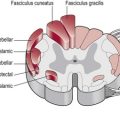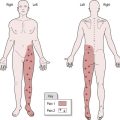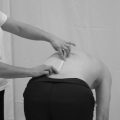Cognition and Perception
What are cognition and perception?
Perception
Perception is the organization, integration and interpretation of sensory stimuli (S3.23) to provide meaningful information. Perception may not be a direct record of the environment surrounding us because meaning is constructed by our brains based on learning and previous experience and is therefore highly individual. This complex processing involves many areas of the brain including the sensory association areas of the parietal lobe (S2.7).
Cognition
Cognition is the ability to process, retrieve and manipulate information. Cognition for the most part is localized in the frontal lobe of the cerebral cortex (S2.7), however these specific areas interact with many other areas of the brain, making processing highly complex. Emotion is now also considered a cognitive process.
Attention
Five levels of attention have been identified:
Focused attention: The ability to focus on one stimulus
Sustained attention: The ability to maintain attention over a period of time, often referred to as attention span
Selective attention: The ability to focus on a specific stimulus, while filtering out any non-relevant stimuli (distractions)
Switching attention: The ability to switch focus between two or more stimuli
Divided attention: The ability to respond to more than one stimulus at one time. For example, talking while walking. This ability is easier when the stimuli are from different sensory modalities.
Basic perception
This includes the processing/interpretation of all sensory modalities:
Touch perception (stereognosis): This is the ability to interpret information using only tactile and proprioceptive sensation.
Visual processing allows us to interpret and organize visual information. This processing occurs primarily in the visual association areas of the occipital, parietal and temporal lobes (S2.7) (Kandel et al. 2000). There are two main aspects to visual perception:
Visuoperceptual: This involves the interpretation of the form of an object, such as colour, texture, shape, size and includes size and form constancy. Form and size constancy are the ability to recognize the same object even when it is in a different context or of a different size.
Visuospatial: This involves the interpretation of spatial relationships such as depth, distance, up/down, in/out, left/right, 2D/3D, figure ground. Figure ground is the ability to differentiate foreground from background. For example, this ability is necessary to distinguish the keys when dialling a number on a telephone key pad or using a TV remote control. Impairments of visuospatial perception can include topographic disorientation (difficulty with orientating between places), poor figure ground and visuospatial neglect.
Visuospatial neglect is the inability to report, respond or integrate sensory stimuli on the contralateral side of the body to the brain lesion (Shumway-Cook and Woollacott 2007). It is important to understand that this is not a deficit of the visual system but a perceptual impairment usually as a result of right hemisphere lesion (National Clinical Guidelines for Stroke 2004). In its mildest form, the patient may just be inattentive to one side and with instruction/encouragement can scan to the affected side. However, in severe cases, the patient may be completely unaware of any sensory stimuli on the affected side and cannot be encouraged to scan. In this case, the person may be witnessed to only eat food from one half of a plate and will not acknowledge anyone who approaches from the affected side.
Body schema
Body schema is defined as the internal picture which informs our awareness of body parts and their relative position to each other and the environment. It provides a basis for exploration and motor performance. It is continually distributed to networks that plan movement and is updated on a moment by moment basis. A deficit of body schema may result in asomatognosia (the inability to recognize body parts and their relative relationships), visuospatial neglect, left right discrimination or anosognosia (denial of the existence of a disability) (Shumway-Cook and Woollacott 2007). These impairments may lead to problems with mobility and activities of daily living. A further complication is ‘pusher syndrome’.
A pusher resists weight bearing on their non-affected side due to a fear of falling in that direction (Karnath et al 2007). Studies indicate the cause of this syndrome is an altered perception of vertical via the somatosensory systems and ultimately body schema. Interestingly, there appears to be no disturbed processing determining visual vertical (Broetz and Karnath 2005).
Memory
• Sensory memory: This allows us to hold a large amount of information for 1–2 seconds.
• Short-term/working memory: This allows 7 ± 2 bits of information to be held between 30–60 seconds.
• Long-term memory: This potentially has an unlimited capacity and consists of various types of memory:
• Declarative memory stored primarily in the medial temporal lobe in the limbic association areas and comprises:
• Autobiographical memory: related to our life events.
• Procedural memory: this is our motor memory, often termed implicit memory. Stored in the cerebellum and supplementary and pre motor areas of the frontal lobe.
• Prospective memory: for future events. For example, remembering birthdays.
Praxis
This is the ability to produce skilled purposeful movement. It basically consists of the conceptual ability to organize the task (ideation) and the ability to apply the motor programme correctly (ideomotor). Dyspraxia is a disorder of praxis and is of five types: verbal, facial/oral, limb, constructional and dressing. Dyspraxia is associated with both left and right hemisphere damage, but more commonly with a left sided neurological lesion (National Clinical Guidelines for Stroke 2004; Shumway-Cook and Woollacott 2007).
Ideational dyspraxia may present with the elements of the task performed in the wrong order; being omitted from the sequence; two or more elements blended together; or with the sequence of actions not completed. The task cannot be performed automatically or with command.
Ideomotor dyspraxia may present as an altered trajectory of movement; poor distance judgement; gestural enhancement; perseveration; vocal overflow; or with a body part being used as an object. The task can be performed automatically but not on command.
Higher executive function
This function includes planning, organization, problem-solving, self-initiation, self-monitoring and self-inhibition of behaviour, and is associated with the frontal lobes of the cerebral cortex (S2.7). The ability to learn is also a cognitive skill and therapists rely heavily on both implicit (during motor learning) and explicit learning (when giving instructions) in rehabilitation. A deficit of these higher level cognitive skills is often termed dysexecutive syndrome and may include the behaviours indicated in Table 33.1.
Table 33.1
Behaviours associated with dysexecutive syndrome
| Executive skill | Abnormal behaviour |
| Initiation drive | Apathy and unable to initiate behaviour |
| Response inhibition | Impulsive and over responsive. Perseveration |
| Task persistence | Unable to maintain attention |
| Organize actions and thoughts | Problems identifying goals and planning behaviour |
| Generative thinking | Rigid and narrow thinking. Limited creativity and flexibility |
| Awareness of own behaviour | Difficulty modifying behaviour. Limited insight into actions, feelings and deficits |
Why do I need to consider cognition and perception?
The incidence in Parkinson’s disease (PD) is high, although not viewed as a primary symptom of the disease. Dysexecutive syndrome (Demakis 2007), visuospatial dysfunction and change in memory and mood (The Parkinson’s Disease Society 2007) have been reported in early PD, with long-term survivors likely to develop dementia.
The incidence in multiple sclerosis (MS) is reported as 50–80% (MS Resource Centre 2002), with the most common symptoms being mild problems with memory, attention span and the speed of processing information. Factors that exacerbate these deficits include low mood and depression, stress, heat and fatigue.
The incidence in cerebrovascular accident (CVA) is also high and commonly constitutes a lack of spatial awareness, poor attention span and problems with memory and higher executive function (National Clinical Guidelines for Stroke 2004).
References and Further Reading
Boyd, LA, Winstein, CJ. Implicit motor sequence learning in humans following unilateral stroke: the impact of practice and explicit knowledge. Neuroscience Letters. 2001; 298:65–69.
Broetz, D, Karnath, H-O. New aspects for the physiotherapy of pushing behaviour. NeuroRehabilitation. 2005; 20:133–138.
Demakis, GJ. The neuropsychology of Parkinson’s disease. Disease-a-Month. 2007; 533:152–155.
Kandel, ER, Schwartz, JH, Jessell, TM. Principles of neural science, ed 4. New York: McGraw-Hill; 2000.
Karnath, H-O. Pusher syndrome: a frequent but little-known disturbance of body orientation perception. Journal of Neurology. 2007; 254:415–424.
Multiple Sclerosis Resource Centre. Cognitive problems in MS. www.msrc.co.uk/printablecfm?pageid=1272, 2002.
Parkinson’s Disease Society. The professional’s guide to Parkinson’s disease. www.parkinsons.org.uk/pdf/B126_professionalguidepdf, 2007.
Royal College of Physicians, National Clinical Guidelines for Stroke, ed 2. Intercollegiate stroke working party, 2004. www.rcp.london.ac.uk
Shumway-Cook, A, Woollacott, MH. Motor control translating research into clinical practice, ed 3. Philadelphia: Lippincott Williams and Wilkins; 2007.





